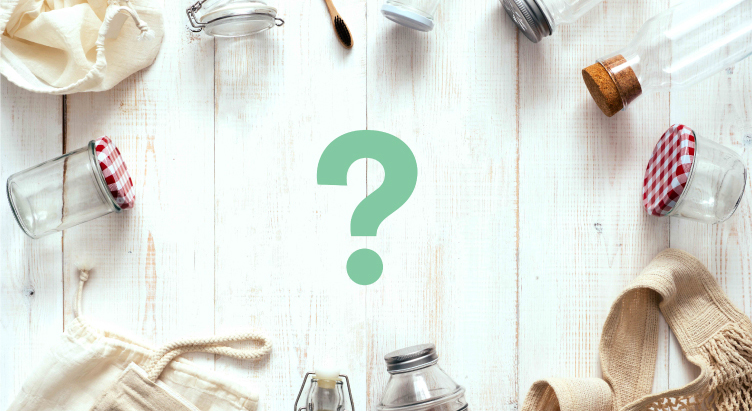 Today, the zero-waste movement aims to tackle the issue of waste head-on. However, while increasing numbers of both producers and consumers are on board, skepticism remains, with critics condemning the philosophy as unworkable.
Today, the zero-waste movement aims to tackle the issue of waste head-on. However, while increasing numbers of both producers and consumers are on board, skepticism remains, with critics condemning the philosophy as unworkable.
The truth is, the “zero” in zero waste is aspirational, and at times, relational to the very concept of waste. It aims to embrace the circular economy and redefine how we view “waste”. It is not a restrictive set of rules that aim for perfection. Zero waste means cutting out waste where we can and finding new ways to process that waste efficiently and to our advantage.
The question is not whether zero waste is possible but whether we are willing to address our waste habits. The challenge is to ensure that it tackles not only the waste that we create, but the sources of its generation.
Defining zero waste
It’s useful to define what people mean when they talk about zero waste and making the distinction between the zero-waste lifestyle and the overarching zero-waste concept may help clear up some of the confusion surrounding the issue. Here, we look at the two most well-defined facets of the movement and how they differ.
The zero-waste lifestyle
Perhaps the most well-known definition of the term relates directly to the zero-waste lifestyle movement popularized by Bea Johnson and Lauren Singer among many others through social media. These approaches focus specifically on the consumer level, providing practical tips, guidance, and advice on how you can personally reduce your waste and its associated carbon footprint through a range of lifestyle choices.
These front-facing popular movements have done plenty to further the zero-waste cause, and Johnson’s Zero Waste Home book, published in 2013, has been translated into 25 languages. Based on a 5Rs principle (Refuse, Reduce, Reuse, Recycle, Rot), it aims to help users produce zero waste in the home. Later, Singer’s famous mason jar became an iconic part of the zero-waste community, and now people around the world are challenging themselves to become zero wasters and generate increasingly tiny amounts of trash!
Benefits
- It enables consumers to make a difference today, reducing the amount of waste generated daily through practical tips.
- Many zero-waste products can be made by hand, plus buying in bulk can save money for consumers in many cases.
- It shifts focus away from recyclables, allowing us to look at our solid waste in a new way and consider its lifecycle before placing it in the recycling bin.
- It can be fun sharing your zero-waste journey through social media, bringing the zero-waste concept to people around the world.
The zero-waste concept
The wider zero-waste concept is based around a constantly developing hierarchical structure as laid out most comprehensively by the Zero Waste International Alliance. Working logically from the top of the pyramid to the bottom, it asks us first to rethink the way we see waste, and then move onto designing closed-loop systems that replace our existing linear systems of “take, make, and dispose”.
These foundational aspects of the hierarchy are what ensures the philosophy remains progressive. Here, we are not simply refusing, reusing, and recycling, but also redefining how we view the concept of waste itself. There are a million ways to redesign our existing systems to make them more efficient, and this is what makes zero-waste goals entirely possible.
Benefits
- It aims to move away from the most polluting products and packaging materials such as petroleum-based plastics and the single-use mindset.
- It constantly looks towards embracing the latest materials and products while striving to design waste out of the system. However, it also looks backward to include ancient practices such as composting and fermentation as waste prevention tools.
- Polluting waste-to-energy practices such as incineration are not part of the zero-waste system.
- It pushes forward the concept of local purchasing and asks us to buy products as locally as possible.
Is zero waste really possible?
As zero-waste chef Anne-Marie Bonneau puts it:
“We don’t need a handful of people doing zero waste perfectly. We need millions of people doing it imperfectly”
Here is where both the zero-waste lifestyle movement and the wider conceptual framework overlap. Together, they lay down a challenge to our existing ways of thinking. They provide clear practical and theoretical guidance on how we should approach waste reduction and prevention, on both the consumer and the producer scales, allowing us to look honestly at the entire lifecycle of a product while simultaneously dealing with existing waste streams as effectively as possible.
For example, consider your morning glass of orange juice. In most cases, it is squeezed from oranges and the “waste” peel then discarded, it is packaged and distributed in a difficult-to-recycle container which is then usually sent to landfill. The next day, the same thing.
 A zero-waste design, on the other hand, would look to ways to minimize waste production and reuse any previously discard resources. Those orange peels could be used to make fabric, those containers replaced by infinitely reusable glass or aluminum bottles, and both, at the end of their useful lifecycle, could then be composted or recycled easily and efficiently.
A zero-waste design, on the other hand, would look to ways to minimize waste production and reuse any previously discard resources. Those orange peels could be used to make fabric, those containers replaced by infinitely reusable glass or aluminum bottles, and both, at the end of their useful lifecycle, could then be composted or recycled easily and efficiently.
Scaling this concept up, perhaps the most progressive frameworks are related to our approach to technology. Modular designs that allow for easy upgrades and repair in everything from your electric car to your smartphone are viable alternatives to “single-use electronics”.
And here’s the key, not only will this approach keep resources in the loop for increasingly longer periods of time, but it is also widely agreed upon that new industries and markets will spring up to make use of resources previously considered waste. Today, there is a wealth of sneaker companies basing their shoes on recycled plastic water bottles, clothing manufacturers using sustainable natural resources, multi-use tote bags made of hemp and other less destructive raw materials. And this is just the tip of the iceberg.
We do not have to sacrifice the economy to build a more sustainable world. In fact, most zero-waste adherents believe quite the opposite. Zero waste looks to create value, designing new forms of revenue that will help to drive our economy across a broad range of sectors. Going zero waste is not only one answer to better waste management and mitigating climate change, but also to struggling economies and unemployment. It is truly a win-win.
How do we make zero waste possible? Look towards the circular economy
Zero waste depends on both producers and consumers taking responsibility for their waste generation, moving forward in tandem to demand and deliver a more circular economy. From extended producer responsibility to increasing awareness for consumers, the goal today must be to examine existing practices and develop more efficient systems that prioritize:
“The conservation of all resources by means of responsible production, consumption, reuse, and recovery of products, packaging, and materials without burning and with no discharges to land, water, or air that threaten the environment or human health.”
-ZWIA Zero Waste Definition
The bottom line is that a zero-waste lifestyle may not be entirely possible in the sense that we ever actually attain “zero”, but striving to design waste out of our lives is a goal that will deliver greater efficiencies and cost-savings, as well as promote mindsets that place increased value on everything we produce and consume.
For more information on the zero-waste movement and how your business can go zero waste, subscribe to the zerowaste.com newsletter or contact one of our TRUE Advisors. We’re committed to a waste-free world, and we’re happy to advise you and your business on how to do the same.

